Lap Quilt Sizes in Inches: 5 Easy Sizes to Make
I enjoy creating lap quilts as they are one of my favorite projects. They are perfect for cozying up on the coldest winter day in front of the TV and are relatively simple to make, making them ideal for beginner quilters.
However, determining the ideal size for a lap quilt can be a bit tricky. After all, not everyone’s lap is the same size.
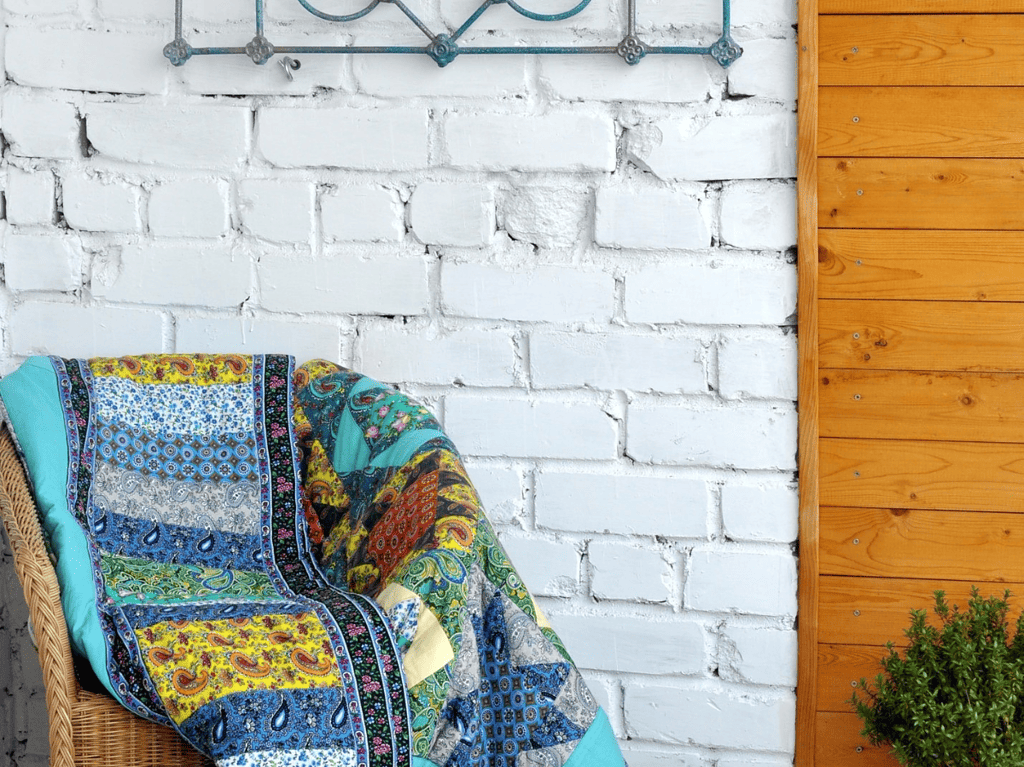
While there isn’t a definitive guide to lap quilt sizes, I can provide some general suggestions.
A lap quilt is a delightful creation, specifically designed to provide comfort and warmth for the lower body and lap. It falls between the dimensions of baby quilts and throw quilts, serving as a versatile and cozy accessory.
Traditionally, lap quilts were square-shaped, measuring around 45×45 inches. However, in modern times, lap quilts have evolved to encompass a wide array of styles, shapes, and sizes.
Within this comprehensive guide, we will explore the world of lap quilt sizes, uncovering their purpose and practicality.
You will discover the process of crafting your very own lap quilt, along with valuable insights on fabric requirements.
Prepare yourself for an enlightening journey as we delve into the intricacies of lap quilt sizes within this all-encompassing guide.
Before we talk about lap quilt sizes in inches, let’s chat about the standard quilt sizes. There are different sizes depending on the mattress size and as a beginner quilter, it’s great to know the different sizes as any lap quilt can be adapted to fit standard sizes.
Sizes of Quilts
| Type of Quilt | Purpose | Inches | Centimeters |
|---|---|---|---|
| Baby Quilt | Suitable for newborns or small babies and small quilts or baby blanket | 30×40 | 76×101 |
| Crib Quilt | Suitable size for larger babies and cot bed or crib mattresses | 36×52 | 91×132 |
| Lap Quilt | Suitable for use in chairs to cover one person’s lap and legs | 45×45 | 114×114 |
| Throw Quilt | Suitable for throwing over a couch and covering more than one person | 50×65 | 127×165 |
| Twin-size Quilt | Suitable for twin beds or toddler bed and use as a throw quilt | 70×90 | 178×229 |
| Double Quilt | Suitable for double beds/full-size quilt and use as a large throw quilt | 85×108 | 216×274 |
| Queen bed Quilt | Suitable for a queen-sized bed or as a large throw queen size quilt | 90×108 | 229×274 |
| King-Size Quilts | Suitable for a king-sized bed or larger quilt | 110×108 | 279×274 |
Lap size Quilt
A lap quilt is a cozy blanket designed to provide warmth and comfort specifically for the lap and lower legs while sitting. It serves as a protective barrier against the cold that can set in when remaining stationary for extended periods.
Lap quilts are particularly beneficial for seniors and wheelchair users, who tend to be less active and more susceptible to feeling chilly.
However, lap quilts are not limited to these groups alone and can be enjoyed by anyone seeking warmth and relaxation. They come in various shapes, sizes, and styles, allowing for personal preference and individual needs to be met.
No matter, if you’re unwinding in front of the television, cheering on your favorite team from the bleachers, or enjoying a leisurely ride in a horse-drawn open carriage, a lap quilt, is the perfect companion to keep you snug and comfortable.
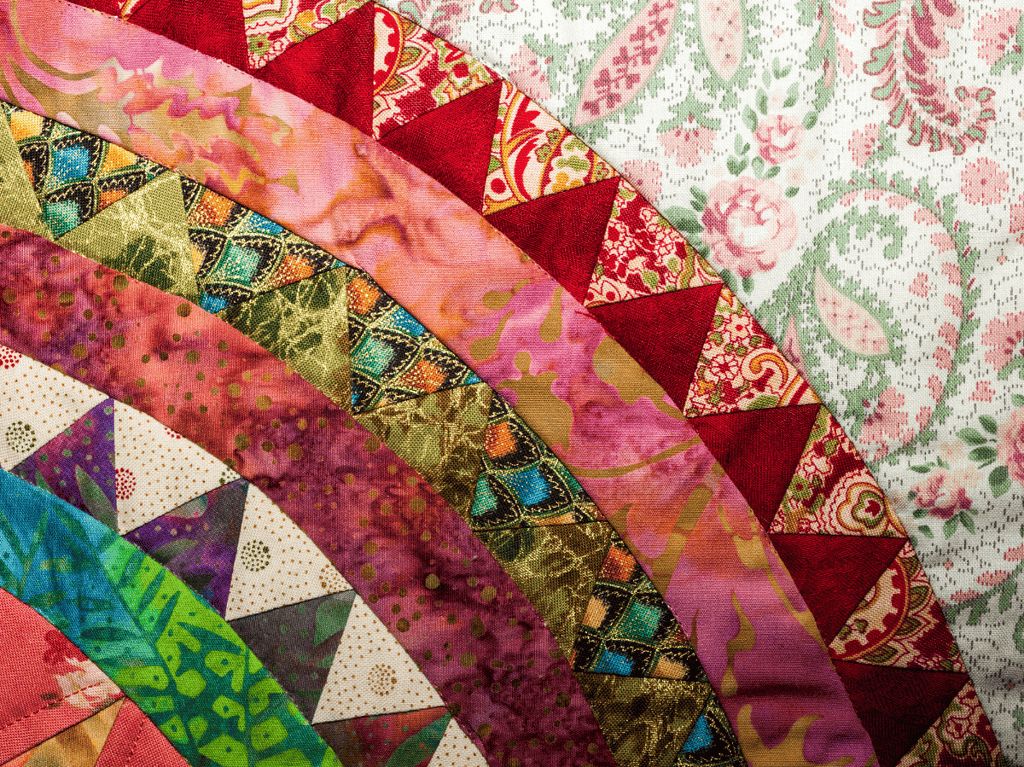
It provides warmth and coziness in a variety of settings.
Just like a blanket, a lap quilt serves the same purpose, making it a versatile and essential accessory for staying warm and cozy in different situations.
Lap quilt sizes in inches
When considering the dimensions of a lap quilt, it is intended to be large enough to comfortably cover a single person’s lap. In comparison, throw quilts and bed quilts are typically larger and can provide coverage for two people.
The specific size of a lap quilt depends on its intended use.
Understanding the various sizes of different quilt options can sometimes be perplexing. To simplify the process of distinguishing a lap quilt from a crib quilt, we have compiled a practical quilt size chart.
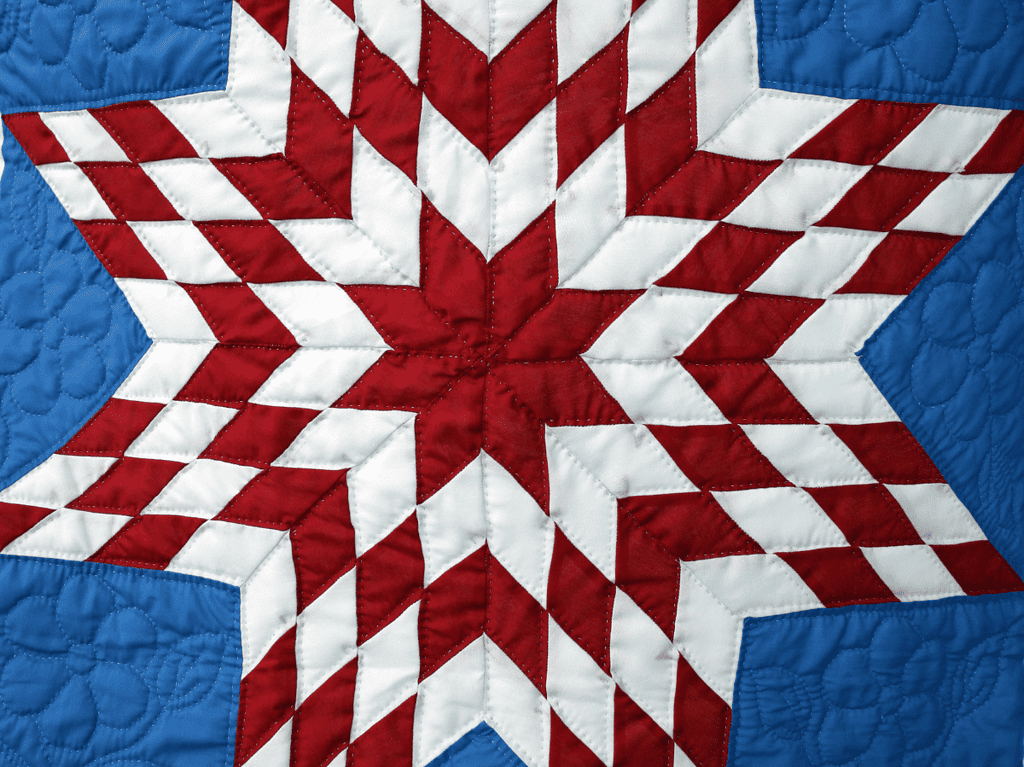
This chart includes the average measurements for each quilt type, accompanied by a brief description outlining their unique purposes.
By having a visual representation of the size variations side by side, you will be able to quickly identify and discern the characteristics of each quilt type at a glance. This will aid you in determining the specific quilt you are seeking.
Lap Quilt Size Chart
As mentioned earlier, lap quilts offer a wide range of options in terms of shapes and sizes. The size you choose for your lap quilt depends on its intended purpose and usage.
In the following chart, we have compiled a selection of popular lap quilt sizes along with examples of how each size can be utilized. Consider this chart as a guideline that you can adjust to make your lap quilt larger or smaller according to your specific requirements.
Please note that the chart only covers lap quilts with regular shapes. If you opt for irregular shapes or circles, you may find that your lap quilt will have different dimensions compared to those listed.

Standard Size of a Lap Quilt
While a traditional lap quilt is typically a square shape measuring 45 inches by 45 inches, it’s important to note that lap quilts can come in various shapes and sizes. They can be as large or small as you desire, and even take on unique shapes like triangles.
For wheelchair lap quilts, smaller dimensions are preferred to ensure they fit properly without interfering with the wheels. Typically, these quilts measure around 36 inches by 45 inches.
If you’re creating a lap quilt for taller individuals, a size of 45 inches by 60 inches may be more suitable. The additional length ensures ample coverage for the legs.
In general, lap quilts can vary in size, ranging from 40 to 50 inches in width and 45 to 72 inches in length. The specific dimensions will depend on the recipient of the quilt and the purpose for which it is being made. Consider the individual’s preferences and requirements when determining the ideal size for your lap quilt.
Wheelchair User Lap Blanket Size
When it comes to wheelchair lap blankets, their primary purpose is to provide warmth and coverage for the user’s lap and legs. Sitting in a wheelchair can be particularly chilly, especially during colder weather conditions. Additionally, wheelchair lap blankets must fit the dimensions of the chair itself, which often requires them to be smaller than standard lap blankets or quilts.
An ideal size for wheelchair blankets is typically around 30 inches by 48 inches. However, the actual dimensions may vary depending on the individual’s size and the width of the wheelchair.
Moreover, the size will also depend on the style and design of the lap quilt. Wheelchair blankets are not limited to square shapes. They can be customized to reflect the recipient’s preferences, likes, and personality.
It’s not uncommon to find wheelchair lap quilts for kids shaped as beloved characters like the Minions from Despicable Me or designed as animals such as dogs or cats. The possibilities for personalized and unique wheelchair lap quilts are endless, allowing for both functionality and individual expression.
Lap Quilt vs Throw Quilt
There is often a blurred line between lap quilts and throw quilts, as both styles of quilts serve similar purposes. In fact, the terms “lap quilt” and “throw quilt” are often used interchangeably. Many lap quilts are nearly the same size as throw quilts, making them suitable for covering laps and legs, as well as for draping over couches as throws.
The distinction between lap quilts and throw quilts is primarily determined by the quilt maker and their intended use for the quilt. However, once the quilt is given to its recipient, they may choose to use it in a way that suits them best, regardless of the maker’s original intention.
This is why there can be confusion over whether a quilt is considered a lap or throw quilt. In fact, the user may simply refer to it as a quilt without distinguishing between the two categories.
Technically, the only difference between a throw quilt and a lap quilt is their size. Let’s explore each category in more detail to better understand their characteristics and uses.
Throw Quilts
A throw quilt typically surpasses the size of a lap quilt, as it is designed to be thrown over couches and can provide coverage for more than one person. In fact, throw quilts are large enough to serve as an additional cover for a twin bed, although they may not extend beyond the sides of the bed.
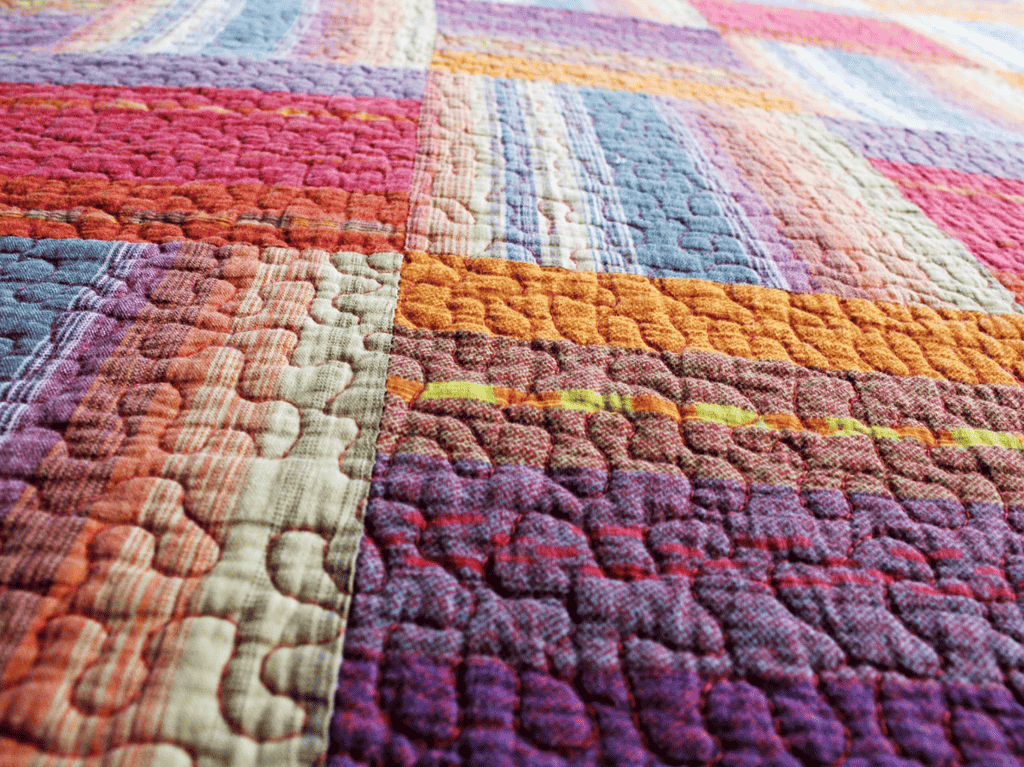
On average, a throw quilt measures around 54 inches by 64 inches. However, these dimensions are not set in stone.
Similar to lap quilts, throw quilts can be customized to any size that suits your preferences. They can range from 50 inches in width to 65 inches in length, allowing for various combinations within that range.
But it doesn’t stop there! If desired, you can even create a throw quilt that matches the dimensions of a quilt for a king-size bed.
Just imagine the coziness of snuggling up under a massive 110-inch by 108-inch throw quilt on your couch. The size possibilities for throw quilts are truly limitless, allowing you to tailor them to your comfort and style.
How to Make a Lap Quilt
To embark on creating your own lap quilt, the first essential step is to locate a suitable pattern. This is especially important if you are a beginner, as a pattern will guide you in determining the required fabric quantity and provide insights into the final size of the project.
You have multiple options for obtaining patterns. You can search for free patterns online or choose to purchase them from quilting stores.
Additionally, quilting magazines offer a wealth of beginner-friendly and more advanced projects to explore and follow.
Alternatively, if you prefer a comprehensive and straightforward approach, you can follow our step-by-step guide for crafting a basic lap quilt using rows of squares.
For this method, you can conveniently acquire pre-cut squares called Charm Packs. These packs consist of at least 42 individual 5-inch squares, simplifying the process of gathering the necessary materials for your project.
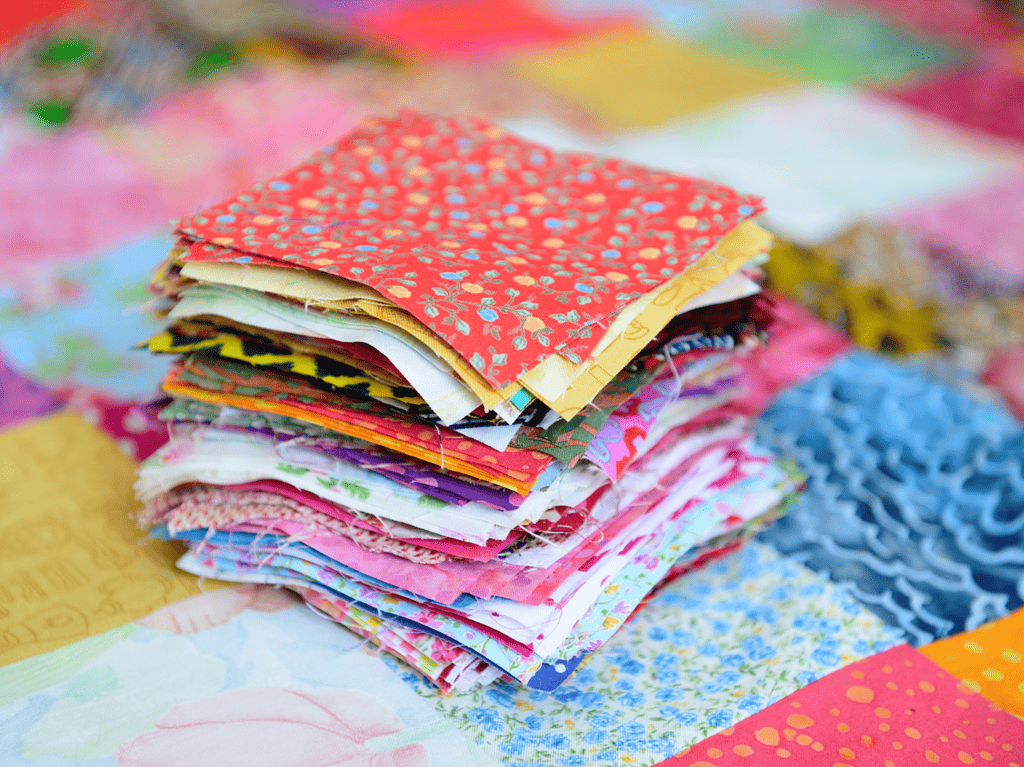
Supplies
Determine right size
Begin by determining the desired size of your lap quilt. Let’s take the example of a lap quilt measuring 45 inches by 45 inches.
In this case, you would require a total of 81 squares, each measuring 5 inches by 5 inches. The calculation is straightforward: divide the preferred width of 45 inches by 5, which gives us 9 squares.
Similarly, dividing the length of 45 inches by 5 also yields 9 squares. To obtain the total number of squares needed, simply multiply 9 by 9, resulting in 81 squares.
Assemble your pieces
To assemble the lap quilt, begin by sewing 9 squares together in a row, ensuring a 1/4 inch seam allowance. Press the seam allowances towards the darker fabrics, which will prevent them from being visible on the front side of the quilt. Repeat this process until you have a total of 9 rows, each consisting of 9 squares.
Sew your rows
Next, sew the rows together to create a large square, ensuring a 1/4 inch seam allowance. As before, press the seams towards the darker fabrics. At this point, you will have completed the quilt top.
However, it’s important to note that the seam allowance will slightly reduce the length and width of the Charm Pack squares. Consequently, your finished quilt may be slightly smaller than the desired dimensions of 45 inches by 45 inches.
Cut your backing
Begin by cutting your backing fabric and batting, ensuring they are both at least two inches larger than the size of your quilt top. This extra fabric will provide an overhang on all sides.
To assemble the layers of your quilt, start at the center of your quilt top. Using safety pins, begin pinning the three layers together—quilt top, batting, and backing fabric. As you pin, make sure to smooth out the layers to keep the quilt sandwich flat and even. Place a safety pin every couple of inches throughout the quilt, securing all layers together.
Quilt the Sandwich
Proceed with quilting the sandwich in your preferred manner. There are various techniques you can use, such as stitching along the previous seam lines (also known as “stitching in the ditch”) or employing decorative stitches for added flair.
Regardless of your chosen method, always begin quilting from the center and gradually work your way outwards. This approach helps distribute the bulk of the fabric towards the quilt’s edges, ensuring a more even and balanced result.
Bind your lap quilt
Once you are satisfied with the quilting, it’s time to move on to binding the edges. Begin by trimming off any excess batting and backing fabric, ensuring that the edges of your quilt are neat and even.
To bind the quilt, use bias binding. This type of binding is cut on the bias of the fabric, allowing it to easily bend and curve along the quilt’s edges. Attach the bias binding to the raw edges of the quilt, folding it over to encase the edges completely.
Sew the binding in place, either by hand or using a sewing machine, ensuring that it is securely attached to the quilt.
By binding the edges, you will provide a clean and professional finish to your lap quilt, while also adding durability and protection to the raw edges of the fabric.
FAQ about Lap Quilts
Number of Squares That Make a Lap Quilt
The number of squares required for a lap quilt varies depending on the desired size of the quilt and the size of the squares being used.
For example, if you are using 10-inch squares, you would need fewer squares to create a lap quilt measuring 45 inches by 45 inches. In this case, a minimum of 4 squares per row would be sufficient. Since the lap quilt is square, you would also need 4 squares for the length.
Using 10-inch squares, you would multiply 4 by 4, resulting in a total of 16 squares needed. It’s important to remember to cut your squares at least half an inch larger than the desired size to account for seam allowances.
To create a lap quilt using 12-inch blocks, we can consider the popular 9 Patch quilt block, which consists of 9 smaller squares. Assuming each block is a 12-inch square, the smaller squares within it should measure 4 inches.
For a lap quilt measuring 45 inches by 45 inches, using 12-inch blocks, you will need 4 blocks. Each block comprises 9 smaller squares, resulting in a total of 36 squares per row of blocks.
Since the lap quilt is square, you will also need 4 blocks for the length, making a total of 16 blocks. With each block consisting of 9 squares, you will need 144 smaller squares in total to assemble the 16 blocks.
It’s worth noting that for this specific example, you may need to trim the quilt top slightly to match the desired dimensions of 45 inches by 45 inches. However, having a surplus of squares is beneficial, as it allows for flexibility and allows room for mistakes.
How Much Fabric Does a Lap Quilt Take?
The fabric requirements for lap quilts can vary based on the desired size and design of the quilt. Additionally, factors such as the inclusion of sashing or borders should be taken into account.
Sashing, which frames each quilt block, is typically a small border, usually no wider than an inch. Borders, on the other hand, encase the entire quilt top and typically range between 2 to 3 inches in width. Both sashing and borders are optional but will increase the fabric requirements if incorporated into the design.
When calculating the fabric needed for your lap quilt, it’s essential to consider the batting as well. Batting is the soft, spongy layer that provides warmth to the quilt. It should be at least 2 inches wider than your finished quilt top. The backing fabric should also have a similar extra width to ensure proper coverage.
By accounting for these factors and considering the desired design elements, you can accurately determine the amount of fabric and batting required for your lap quilt.
In addition to accounting for the fabric requirements for the main components of your lap quilt, it’s crucial to consider seam allowances for all the areas where different parts are sewn together. This includes seams between blocks, sashing, and even between individual squares or triangles within a block. Taking these seam allowances into consideration is essential when calculating the fabric needs for your lap quilt.
Let’s take an example of a 45 x 45 inch lap quilt without sashing or borders, using 3-inch squares. To allow for seams, each square should be cut at 3.5 inches. For one row of the quilt top, you will need 15 squares, measuring 3.5 inches each.
To determine the length of each row, multiply 15 by 3.5 inches, resulting in 52.5 inches. Since most quilting fabric is typically 40-45 inches wide, rounding up the fabric yardage to 2 yards would be a safe choice.
By considering both the main fabric components and the necessary seam allowances, you can accurately calculate the fabric needs for your lap quilt, ensuring you have enough fabric to complete your project.
To ensure proper coverage and allow for shrinkage as you quilt the layers together, it’s recommended that your backing fabric and batting measure at least 2 inches larger than your quilt top. For a lap quilt measuring 45 inches x 45 inches, your backing fabric and batting should be at least 47 inches x 47 inches.
This will provide adequate margin for securing the layers and accommodating any potential shrinkage during the quilting process. As mentioned before, rounding up to 2 yards of fabric is a suitable estimation for your backing fabric and batting needs.
In general, it’s always a wise decision to err on the side of caution and overestimate your fabric requirements when quilting. Having a little extra fabric ensures you have enough material to complete your project without any unexpected shortages.
Can You Use Fat Quarters to Make a Lap Quilt?
Fat quarters are indeed a wonderful option for quilting, and they are particularly well-suited for lap quilts. Originally designed with quilting in mind, fat quarters are a versatile and practical pre-cut size.
Measuring 18 inches x 22 inches, a fat quarter is essentially a quarter of a yard of fabric, but with a slightly more generous cut.
This size is perfect for lap quilts because it allows you to purchase a variety of different shades and patterns without having to buy full yards of each fabric. This means you can get creative and mix and match fabrics at a lower cost.
Depending on the size of your lap quilt, you may need as few as 8 or as many as 12 fat quarters to complete it. The beauty of fat quarters is that they are available in coordinating designs, both individually and in packs. This gives you ample room for creativity and experimentation.
Working with fat quarters is also a breeze. Since they are slightly larger than a traditional quarter yard, they take up less space on the cutting table.
This makes cutting out smaller triangles and squares much simpler and more efficient. Overall, fat quarters offer convenience, versatility, and ease of use, making them an excellent choice for lap quilt projects.
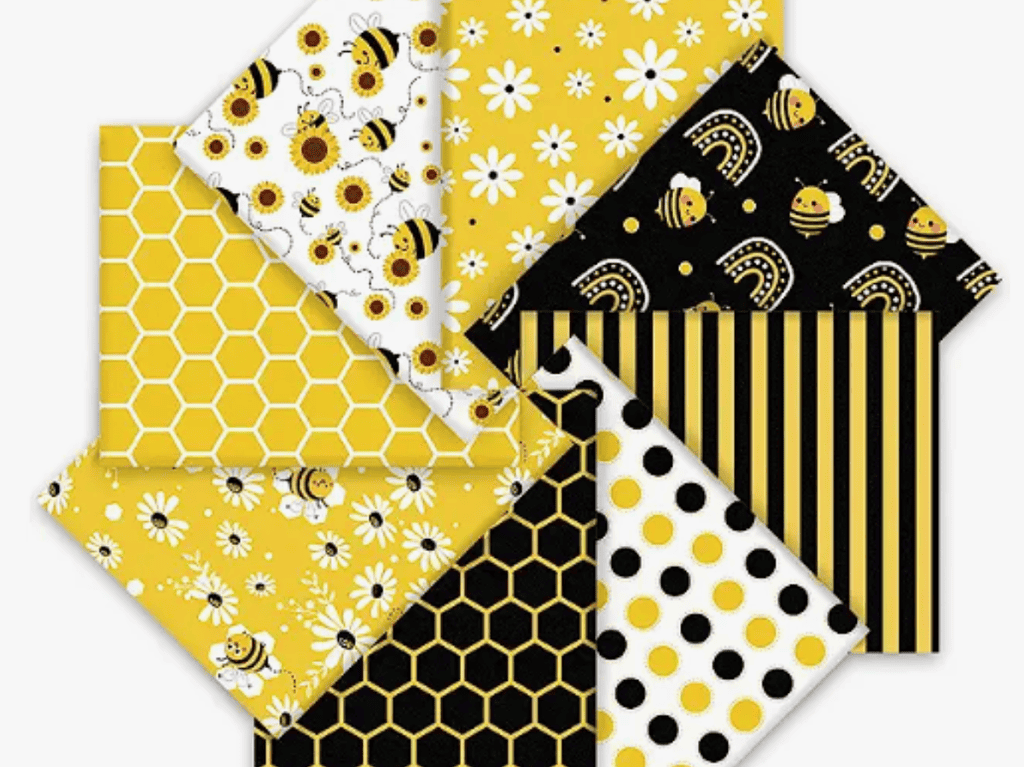
What Is the Best Size for a Lap Quilt?
Lap quilts offer flexibility in terms of size, allowing you to choose the dimensions that best suit your needs. If you are making a lap quilt for a wheelchair user, opting for a smaller size of 36 inches x 45 inches is advisable to ensure it stays clear of the wheels and provides cozy comfort.
On the other hand, if your intention is to enjoy the quilt while relaxing in your favorite armchair, you might prefer a larger size.
A generous 45-inch x 54-inch quilt will not only cover your lap but also provide ample warmth for your legs and even keep your toes cozy.
When it comes to lap quilts, there is no definitive right or wrong size. The best size for you is the one that meets your personal preferences and requirements.
Feel free to choose a lap quilt sizes in inches that suits your comfort and enjoyment, as it’s all about creating a quilt that brings you joy and coziness.
Fabric Giveaway
Enter our monthly fabric giveaway. Simply complete the tasks daily and you will be entered into the drawing. Winner will be randomly drawn on the first day of the month and notified via email
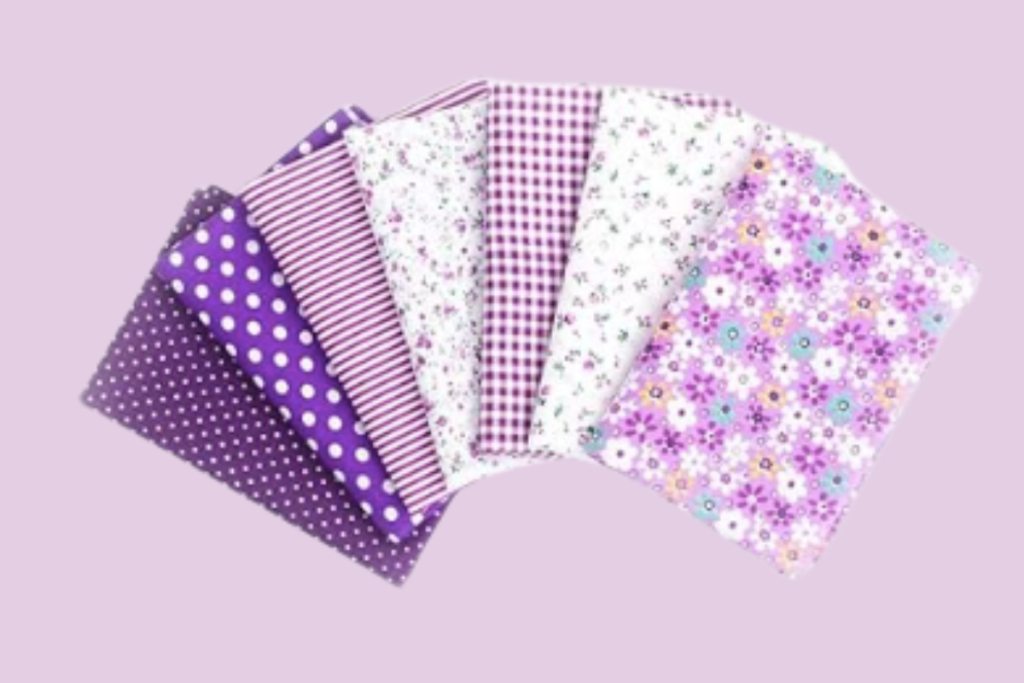

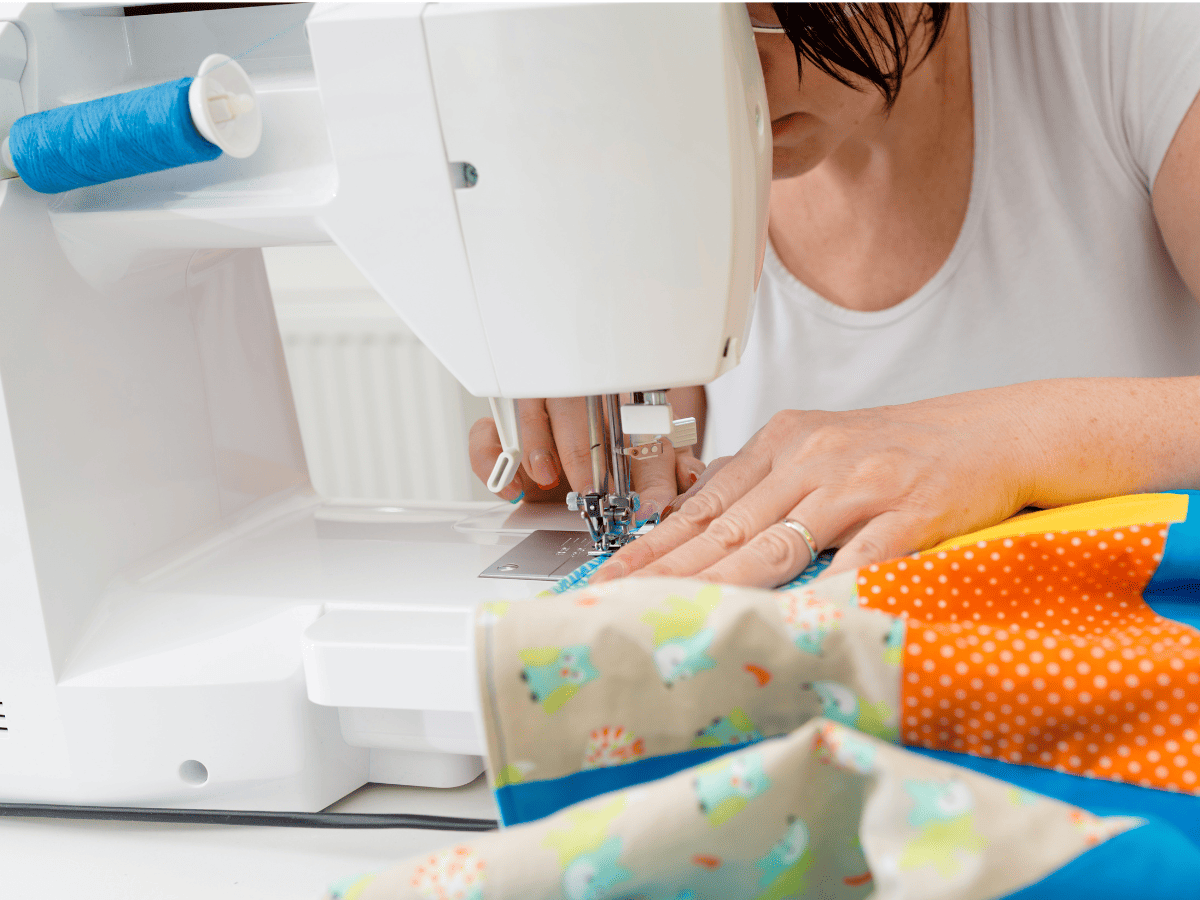
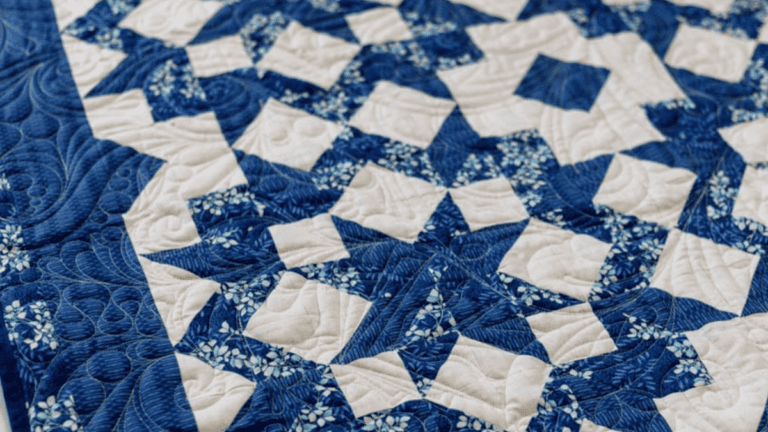
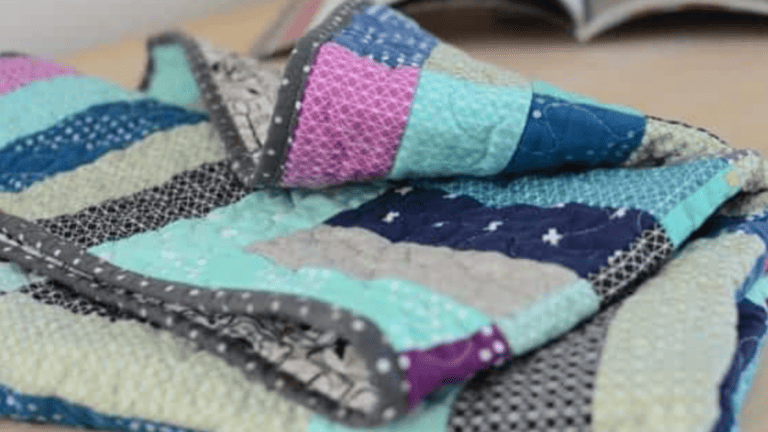
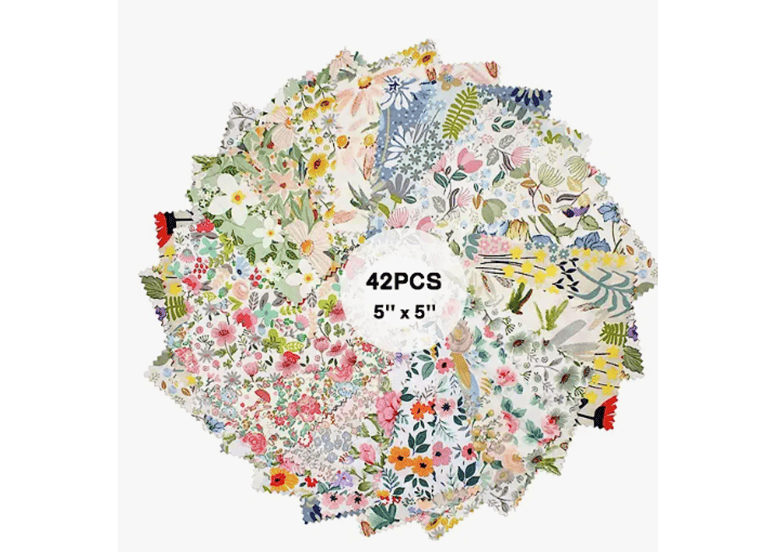

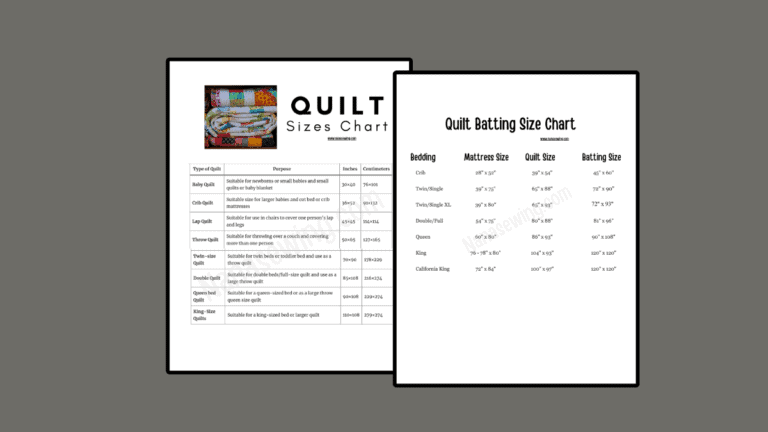
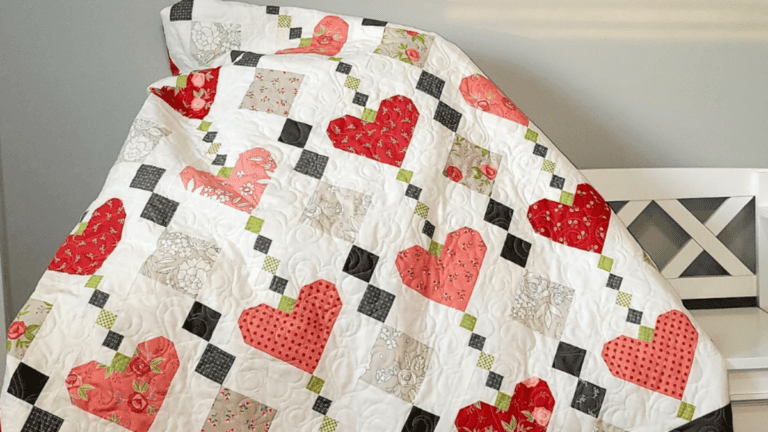
2 Comments